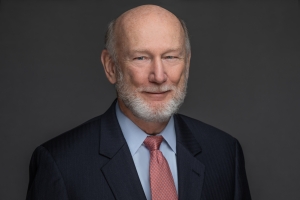
IT’S A WONDERFUL DISCUSSION
Here at the Hero Fund we enjoy the traditional classic Christmas move It’s A Wonderful Life as much as anyone. It’s a great movie, one of the best American movies. We bask in the warmth of its celebration of American life and values and its gloriously happy ending. And yet, as Hero Fund folk watch, other thoughts linger in the back of their minds: Would Jimmy Stewart’s character, George Bailey, receive the Carnegie Medal for his rescue?
Oh, before I go on, let me say that I am not using “we” in the royal sense. At a minimum I will implicate Walter Rutkowski, retired Hero Fund president, and Jewels Phraner, our very un-retired communications director. The Hero Fund recently heard from Jimmy Hawkins, who played George’s youngest son in the movie. This prompted Jewels to churn out a pile of research on these pressing issues along with a command that I start writing.
It’s possible that the rescue of real-life Carnegie Hero Antonio Varacalli inspired George Bailey’s movie rescue of his guardian angel, Clarence Odbody. This was discussed in a 2017 Impulse article by Rutkowski. As Walter recounts it, Seneca Falls, New York, claims to be the inspiration for George Bailey’s hometown, Bedford Falls. Ellen Baker makes the case in “This is the Real Bedford Falls,” a December 2021 article in the online magazine Medium. Baker tells of a Seneca Falls man who remembers cutting the hair of Frank Capra, director of the film, when he passed through town in the late 1940s. And Seneca Falls was the site of Varacalli’s 1917 rescue memorialized in a plaque which Capra may have seen while having his hair cut. There were similarities between the real and the film rescues, as both involved apparent suicide jumpers from a bridge.
At least one movie historian disputes Seneca Falls’ claim. But do you remember Zuzu, George Bailey’s youngest daughter? Every year the actress who played Zuzu, Karolyn Grimes, returns to Seneca Falls for their annual It’s A Wonderful Life festival. So, who do we believe? I’m going with Zuzu and Frank Capra’s unnamed barber. It’s Seneca Falls and Carnegie Hero Antonio Varacalli for me!
That leaves the big question, would Jimmy Stewart/George Bailey’s action in the movie qualify him for a movie Carnegie Hero Medal? The answer will tell you a lot about the meaning of the Carnegie Medal.
In the movie, George becomes distraught over the impending bankruptcy of the savings & loan bank. He gets drunk and, considering suicide, goes to a nearby bridge and prepares to jump. Before he can, his personal guardian angel, Clarence Odbody appears beside George and jumps into the river where he struggles to stay afloat. George puts aside his own concerns and leaps after Clarence into the freezing water below. George successfully rescues him. On the surface, this looks like a good case, similar to many we have awarded in the past.
But, there are two issues: First, was George really attempting a rescue, or was he committing suicide himself but just got it wrong somehow? Second, was George too drunk to be considered? George had gone on a bender that night and was drunk when he went to the bridge. To award the Carnegie Medal, the rescuer must be able to understand the risk involved and make a reasoned decision to take the risk. Remember, we don’t give the Medal because rescuers demonstrated great expertise or athletic ability in pulling off the rescue; We give the medal because the rescuers made moral decisions to take personal risk to save the life of another. We also don’t give the medal for “hey, hold my beer” stunts.
George’s actions answer both questions for us. We will award cases where the rescuer has used drugs or alcohol unless the rescuer could not understand the risk involved. In the case of George Bailey, his actions showed that he was fully capable of making a moral choice. George actually made two decisions: whether to jump into the river and whether to keep going. The first doesn’t tell us much since it was compatible with either a selfish decision to commit suicide or an altruistic decision to save Clarence. The second, is more telling. George could have yielded to the cold water, escaped his woes, and left his life insurance payout to bail out the bank. Or he could have struggled against the cold, saved Clarence, and gone on to face his troubles without the life insurance money. The movie is about the difficulty and wisdom of his choice.
And this, of course, is why It’s A Wonderful Life is a Christmas movie at heart. It is about family, community, and obligations that burden, bind, and buoy us all. So, with no authority at all to make this pronouncement, I say that if the imaginary world of Seneca Falls had a Hero Fund, it would award George Bailey the Carnegie Medal. Two medals, actually. Watch the film just one more time and see for yourself why that might be.

